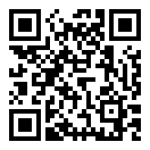At PromiseCare Medical Group in Hemet, California, a Hepatobiliary Iminodiacetic Acid (HIDA) scan is utilized to diagnose and treat conditions affecting the liver, gallbladder, and bile ducts.
During this non-invasive imaging test, a small amount of radioactive tracer is injected into the bloodstream, illuminating the inner workings of the biliary system. Patients undergoing an HIDA scan must fast for at least 4 hours before the procedure, which can take 1 to 4 hours.
As the tracer moves through the system, a gamma camera captures images, revealing abnormalities and providing a clearer picture of the patient’s health. This diagnostic tool allows physicians to identify and address various conditions effectively, ensuring prompt and targeted treatment.
Overview
A Hepatobiliary Iminodiacetic Acid (HIDA) scan is a non-invasive imaging test that evaluates the function of the biliary system, which includes the liver, gallbladder, and bile ducts.
The scan uses a radioactive tracer injected into the bloodstream and tracked by a gamma camera. The procedure, including image capture, typically lasts one to four hours.
I fast for at least four hours before the procedure before preparing for the scan. The radioactive tracer will move through the liver, gallbladder, and bile ducts during the scan, allowing for the diagnosis of any potential issues.
The expected results will show the radiotracer moving freely through the biliary system, while abnormal findings may indicate issues such as acute cholecystitis or bile duct obstructions.
The HIDA scan is generally safe, with minimal radiation exposure. However, it is essential to inform the healthcare provider about any allergies to radiotracers or other medications before the procedure.
The scan is a significant step in diagnosing and treating conditions affecting the liver, gallbladder, and bile ducts.
Types
The HIDA scan’s versatility is rooted in its various types, which cater to different diagnostic needs and patient conditions. A single type of radioactive tracer, typically technetium-99m labeled iminodiacetic acid, assesses the biliary system’s functionality.
Depending on specific needs, dynamic imaging, which captures real-time bile flow, or static imaging, which provides more detailed analysis through delayed imaging, may be used.
In some cases, additional agents like sincalide may be administered to stimulate gallbladder contraction, enhancing visualization during the scan. Modified HIDA scans can evaluate specific conditions, such as biliary atresia in infants requiring specialized protocols.
Depending on the clinical question, the HIDA scan can also be adapted to assess the gallbladder ejection fraction or detect bile leaks post-surgery. The procedure can be tailored to a patient’s unique situation by choosing the right type of HIDA scan, ensuring a safe and effective diagnostic experience.
With its flexibility and range of applications, the HIDA scan is an invaluable tool in diagnosing and treating biliary system disorders.
Why it’s done
When digestive issues suggest a potential problem with the gallbladder, a HIDA scan is often the diagnostic tool of choice. This scan is essential in evaluating the gallbladder’s function and helping diagnose conditions such as acute and chronic cholecystitis, which is typically caused by gallstones.
A HIDA scan also tracks the flow of a radioactive tracer through the biliary system, identifying potential blockages in the bile ducts. The scan plays a vital role in evaluating congenital bile duct issues, like biliary atresia, especially in newborns with severe jaundice.
After gallbladder or liver surgery, a HIDA scan can monitor for postoperative complications, such as bile leaks. Additionally, the scan measures the gallbladder ejection fraction, providing insights into the gallbladder’s health and function.
These results aid in making informed treatment decisions, ensuring the most effective care. A HIDA scan is a valuable diagnostic tool that can diagnose various biliary conditions, help understand the gallbladder’s function, and develop a plan to address digestive health issues.
Who it’s for
Individuals with digestive issues often face uncertainty, but a HIDA scan can help identify those who’d benefit from further evaluation. Severe right upper abdominal pain may be a symptom that can be addressed with the help of a HIDA scan, which can reveal underlying conditions such as cholecystitis or gallstones.
Those who may benefit from a HIDA scan include individuals who’ve undergone gallbladder or upper gastrointestinal surgery and are experiencing complications such as bile leaks or infections. Newborns with severe jaundice may also require a HIDA scan to rule out biliary atresia. Additionally, liver transplant patients may need a HIDA scan to monitor liver function and bile flow.
The HIDA scan is valuable for examining conditions like bile duct obstructions, sphincter of Oddi dysfunction, and liver diseases such as cirrhosis or hepatitis.
By analyzing gallbladder ejection fraction, a better understanding of digestive health can be gained. A HIDA scan can provide the clarity needed to move forward with treatment and find relief from symptoms like abdominal pain.
Risks
Risks associated with a HIDA scan include radiation exposure, although the levels are typically minimal, comparable to the annual background radiation most people receive. Individuals should inform their healthcare provider of known allergies, as rare allergic reactions to the radioactive tracer can occur.
Discomfort or bruising at the injection site is possible due to intravenous administration of the radiotracer.
Pregnant individuals may be advised against the scan due to potential risks associated with radiation exposure to the fetus. Breastfeeding individuals may need to discard milk for 24-72 hours post-scan.
Mild side effects, such as nausea or vomiting, can occur after the procedure. Patients will be monitored for unusual symptoms, which are usually short-lived.
Awareness of these potential risks can help individuals decide about undergoing a HIDA scan.
How you prepare
Preparation is critical to a successful HIDA scan and begins long before the procedure. Fasting for at least four hours beforehand is necessary, but clear liquids are allowed; this guarantees accurate imaging results.
It’s essential to inform about any allergies, especially to radiotracers, and list any medications that need to be paused.
Before the procedure, consider the following:
- If pregnant or possibly pregnant, disclose this information due to the radiation exposure involved. If breastfeeding, plan to stop for 24 hours after the scan and discard any pumped milk.
- Wear loose-fitting clothing to facilitate easy access for the radiotracer’s intravenous injection. A hospital gown may be provided.
- Avoid recent barium studies or specific imaging tests within 48 hours before the HIDA scan, as these can interfere with the results.
What you can expect
The HIDA scan typically involves lying on a table while a gamma camera captures images of a small amount of radioactive tracer injected into a vein. This imaging procedure usually lasts 1 to 4 hours.
During this time, the radioactive tracer moves through the biliary system, highlighting bile flow from the liver to the gallbladder and small intestine without causing any sensations. The resulting images help detect potential abnormalities.
Remaining immobile during the scanning period may cause reactions such as dry mouth or fainting dizziness. Consuming non-sugary, non-high-caffeine foods and staying hydrated before and after the procedure can help minimize these reactions.
Following medication guidelines and staying quiet during the procedure can also ensure the most accurate results.
After the scan, large volumes of precise, hydrating drinks are recommended to help flush out the system. Regular hydration should continue after the procedure.
Results
Evaluating the results of a HIDA scan involves assessing how a radioactive tracer moves through the biliary system, checking for blockages or abnormalities. If the tracer flows freely from the liver to the gallbladder and into the small intestine, the results are likely average.
However, if the tracer doesn’t enter the gallbladder, it may indicate acute cholecystitis, often caused by gallstones. The slow movement of the tracer can suggest potential blockages in the bile ducts or liver dysfunction. The gallbladder ejection fraction is also measured, which can reveal chronic cholecystitis or other gallbladder dysfunctions.
Some possible abnormal results include:
- The radioactive tracer doesn’t enter the gallbladder, indicating acute cholecystitis
- Slow movement of the tracer, suggesting blockages in the bile ducts or liver dysfunction
- Visualization of the tracer in non-biliary areas, indicating complications such as bile leaks
Abnormal results may require further testing or treatment to guarantee proper biliary function. The action will depend on the specific results and the patient’s condition.
Additional measures may be necessary to address any detected abnormalities.



